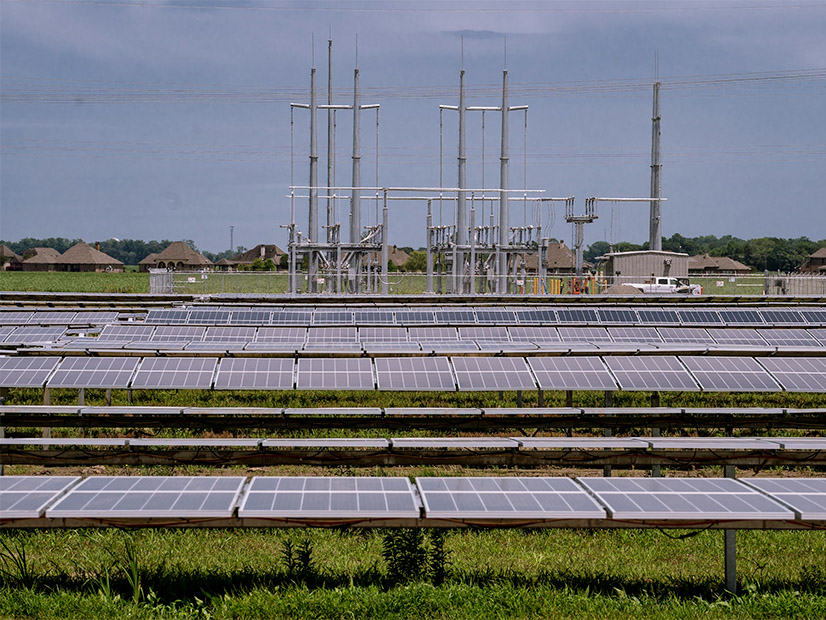To cut down on its surging congestion, MISO is suggesting a tighter limit on how much new generation can affect the surrounding grid without triggering more network upgrades.
The grid operator announced it is considering halving new generation’s allotted distribution factor impact on transmission from 20% to 10% for its basic level of interconnection service, called energy resource interconnection service (ERIS).
Some MISO members maintain that interconnecting generators are unacceptably raising congestion and a narrower distribution factor threshold would keep runaway congestion in check by flagging a need for more transmission upgrades.
MISO said a preliminary analysis showed that lowering the distribution factor for ERIS to 10% identified “several” new network upgrades in its annual interconnection queue cycles, “the majority being in the 69 to 161 kV voltage range.”
Interconnection customers can either elect to secure ERIS, or the higher-quality network resource interconnection service (NRIS), which ensures that the entire installed capacity of resources is deliverable. NRIS is generally more expensive than the unguaranteed ERIS.
MISO said ERIS elections from new generation “can lead to more congestion on the transmission system.” It said a lower distribution factor cutoff could result in fewer system reliability issues and have more interconnection customers sharing in network upgrade costs.
The RTO now faces billion-dollar congestion costs on a quarterly basis. MISO’s long-term transmission plan is set to assuage some of that congestion, but the first in-service dates of the 18 new lines are at least eight years out.
Meanwhile, the grid operator is again bracing for a historic level of interconnection requests in its 2022 queue cycle. During an Aug. 30 transmission cost allocation meeting, MISO’s interconnection team estimated the RTO will field about 700 new interconnection requests totaling about 100 GW in a few weeks.
MISO staff also said they’ve been receiving complaints from new generators that have interconnected but cannot get their output delivered on the system due to transmission congestion.
Some of MISO’s clean energy advocates have said lowering the distribution factor threshold seems punitive to renewable energy, which makes up the overwhelming majority of MISO’s interconnection queue.
At a mid-August Interconnection Process Working Group, Xcel Energy’s Randy Oye said increased expenses for new generation isn’t a valid argument against lowering the distribution factor threshold. He said if a project stands to affect lines by 20%, then the project’s business case might need to be reexamined.
“The load is going to pay $10 billion for transmission. I think a fair question is: what should generation pay?” he said, referring to the cost of MISO’s recently approved long-range transmission portfolio.
Stakeholders asked for some sort of MISO demonstration that lowering the distribution factor threshold will in fact reduce congestion. They also criticized MISO for concocting a policy change in secret before bringing a proposal to a stakeholder meeting.
MISO’s stakeholder community is again set to again debate a stricter distribution factor at an Oct. 10 Interconnection Process Working Group meeting.




